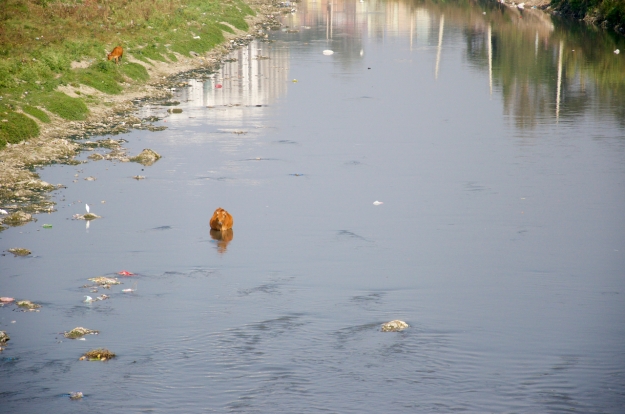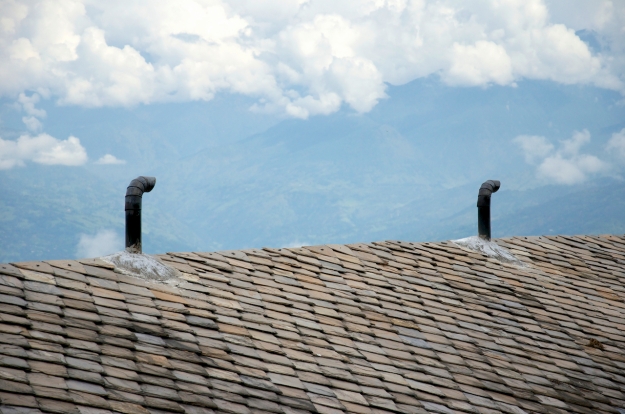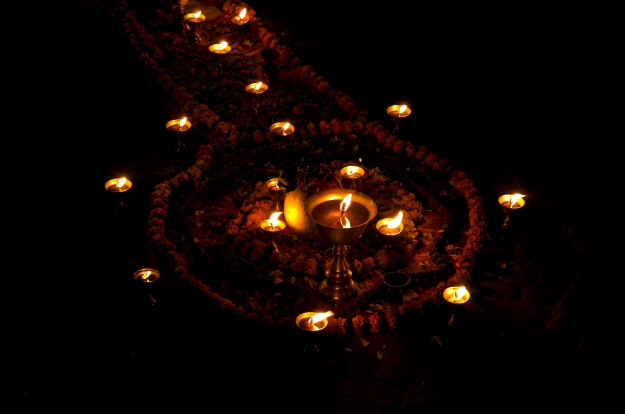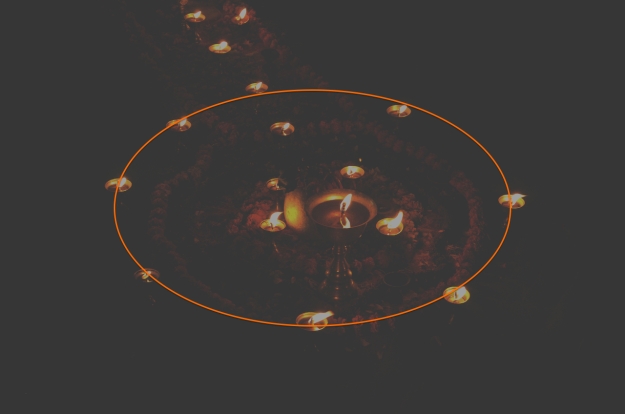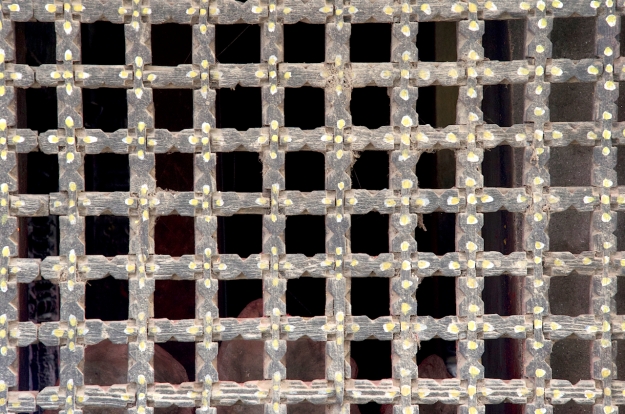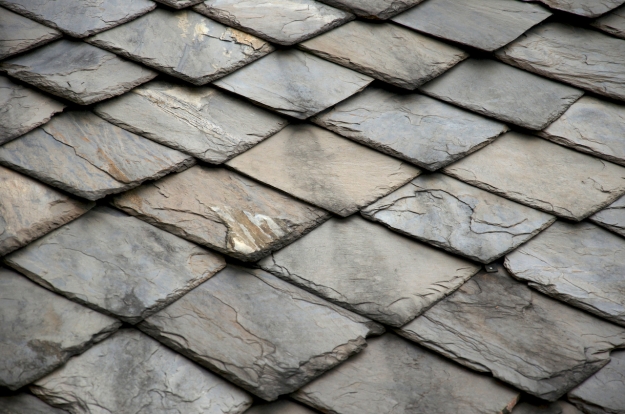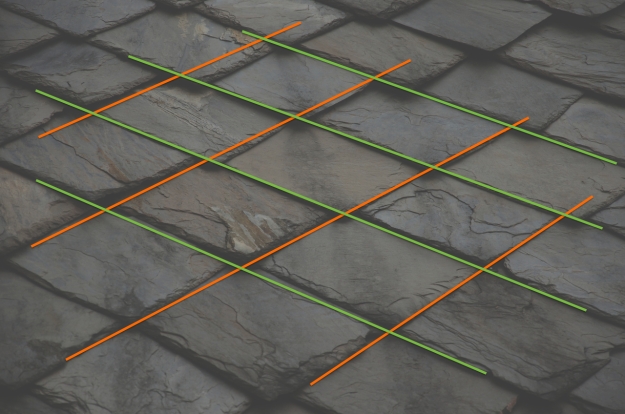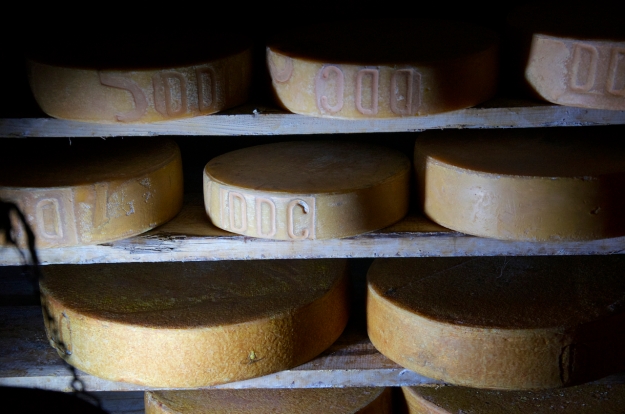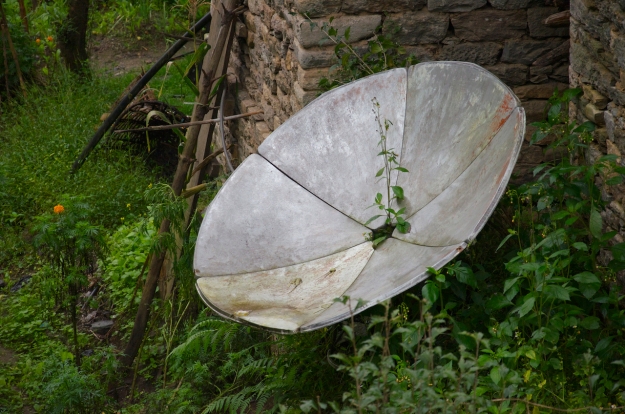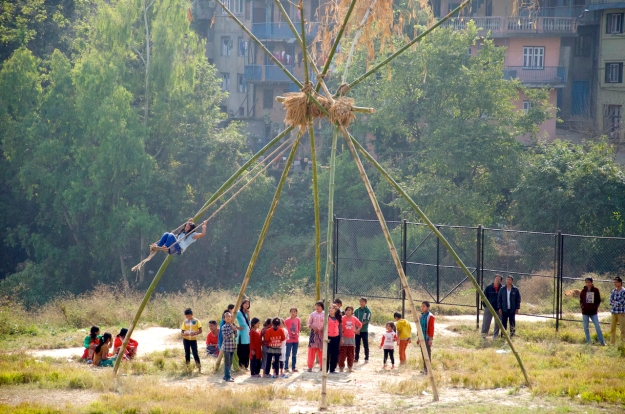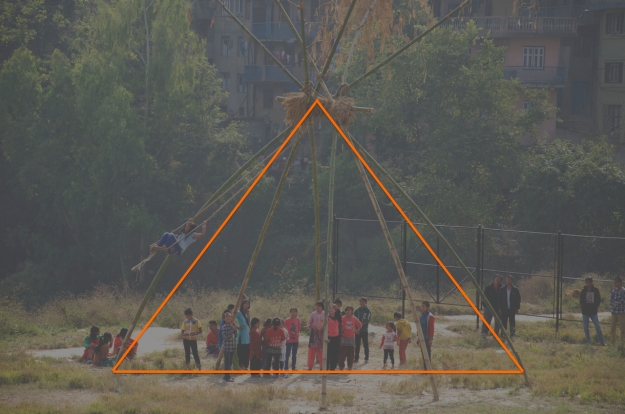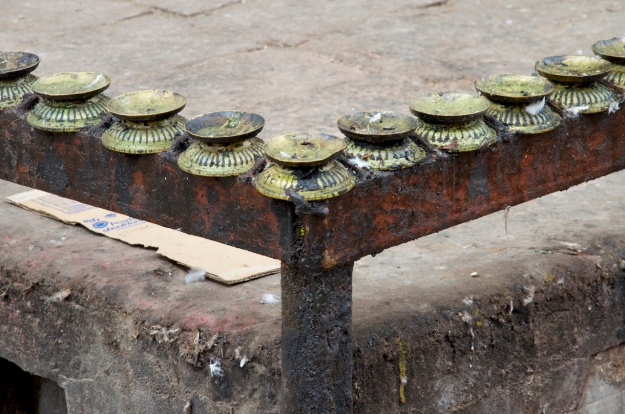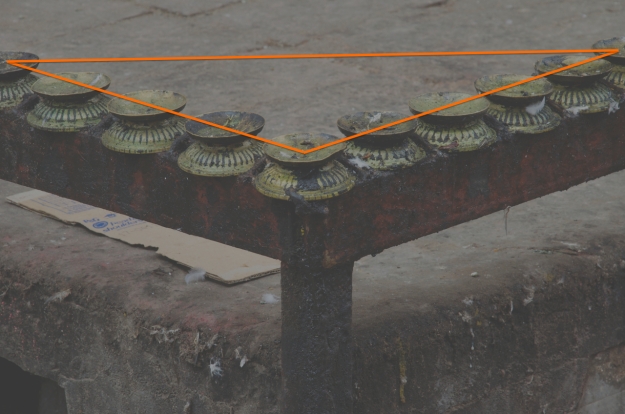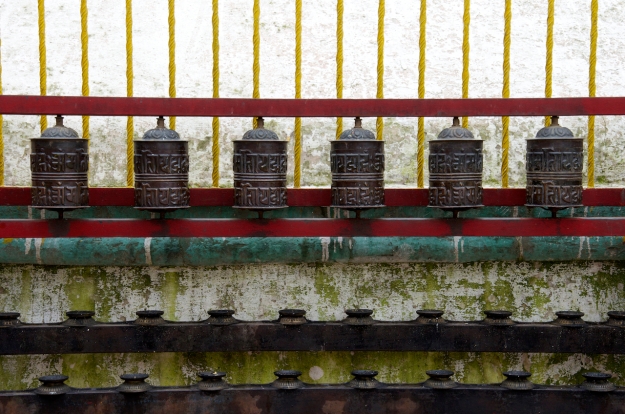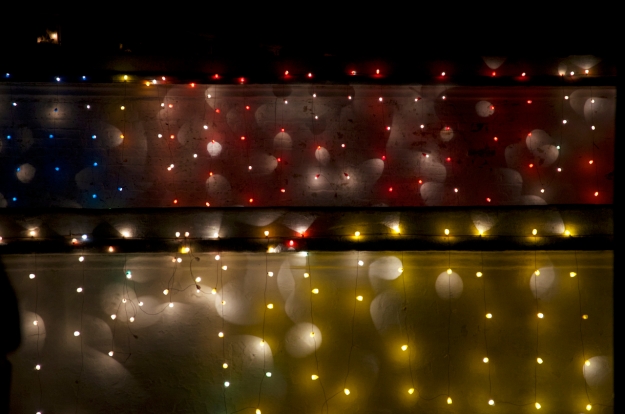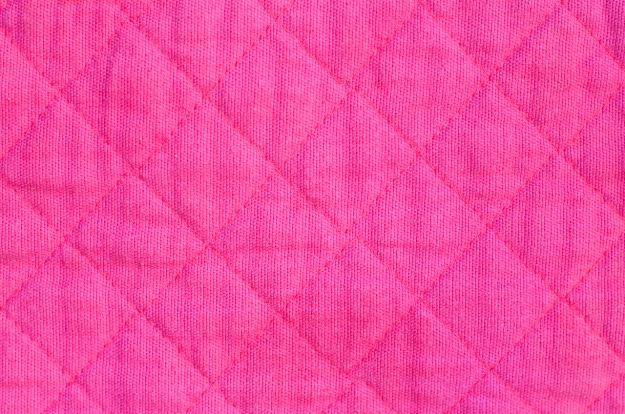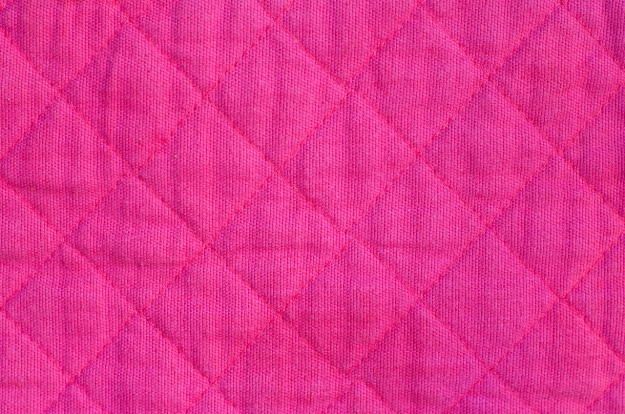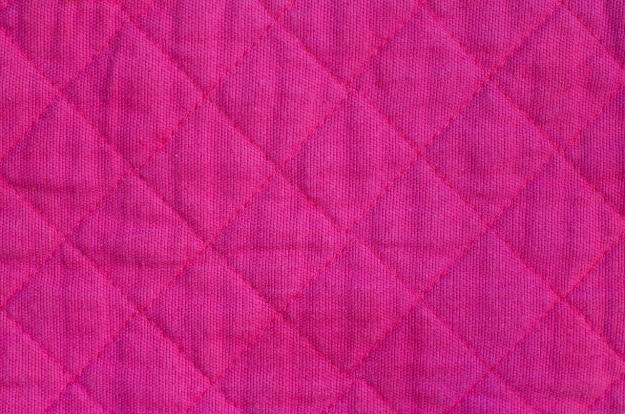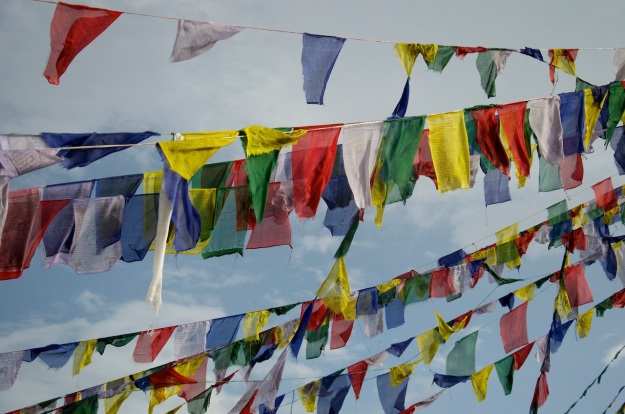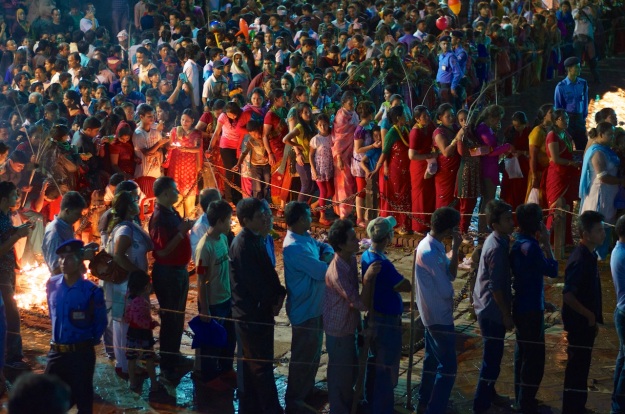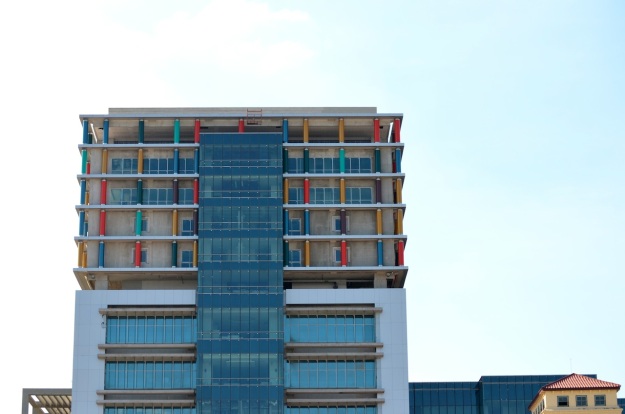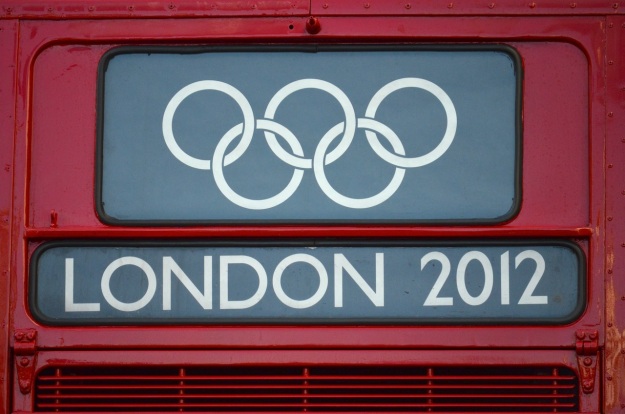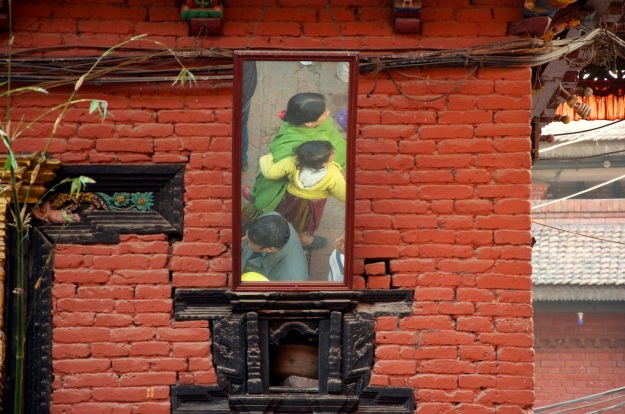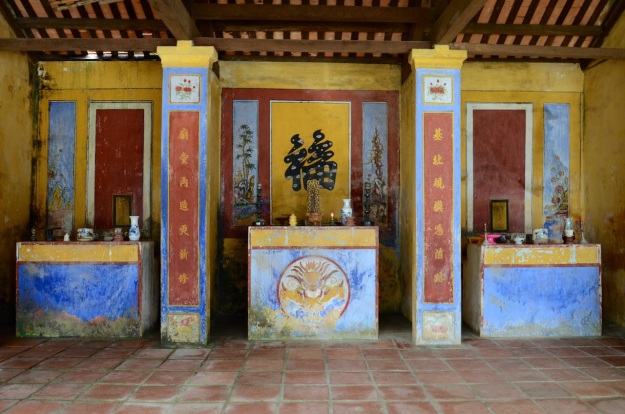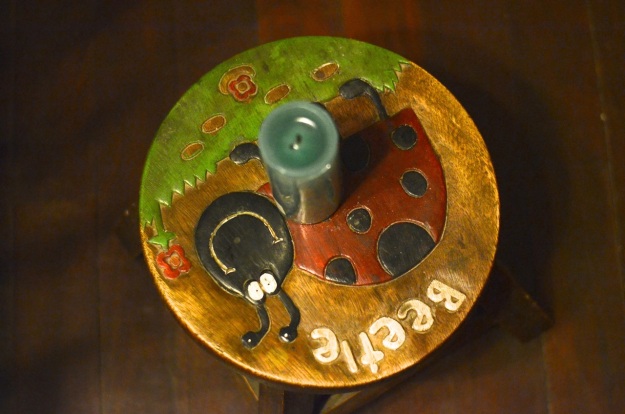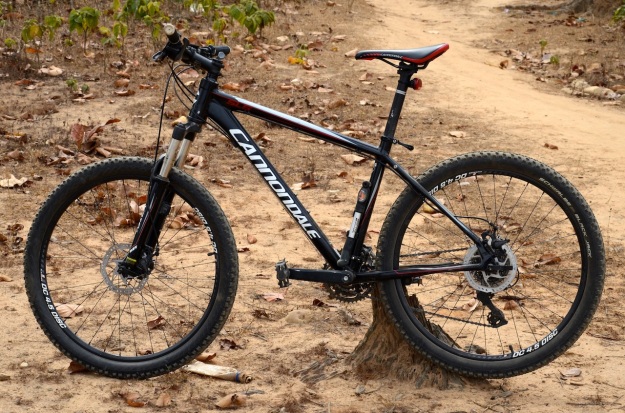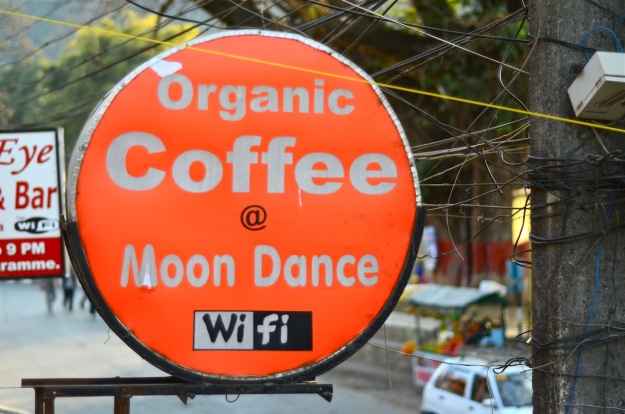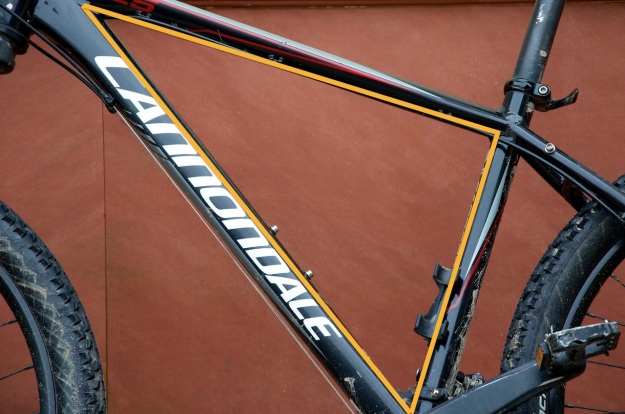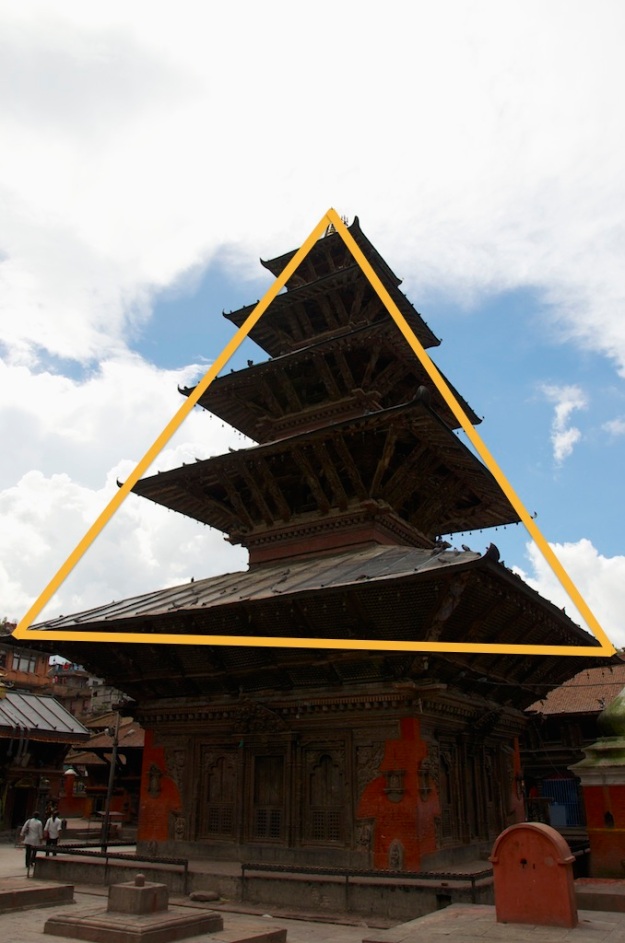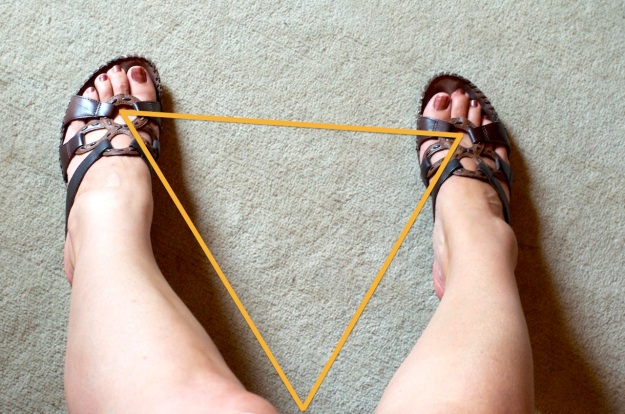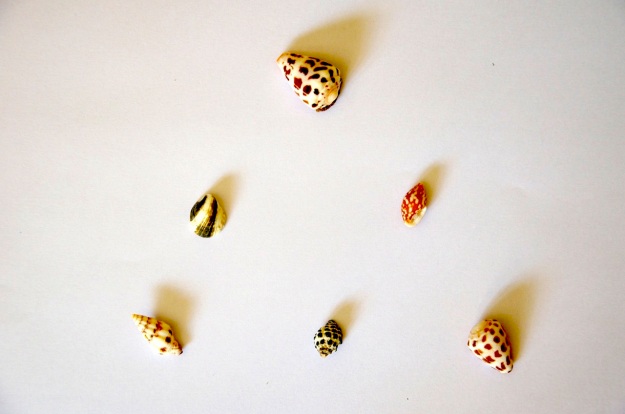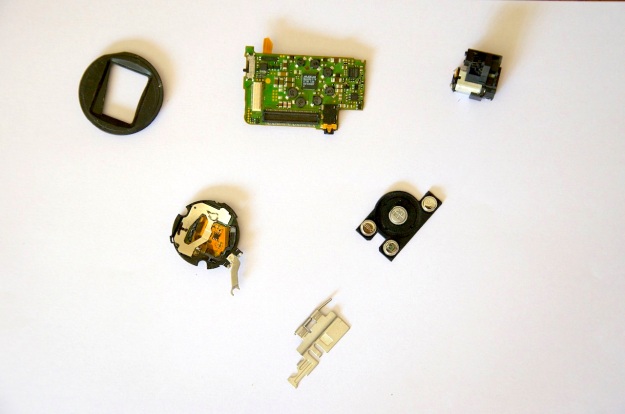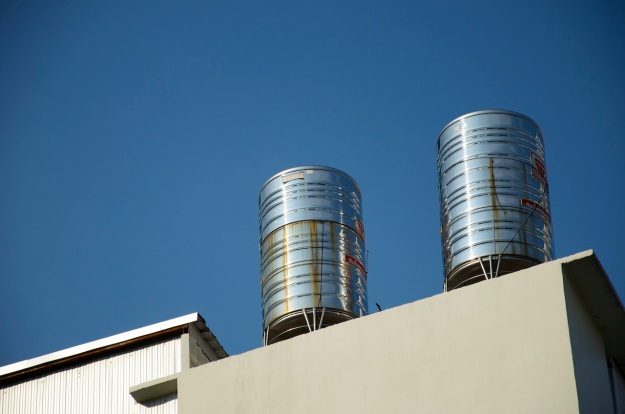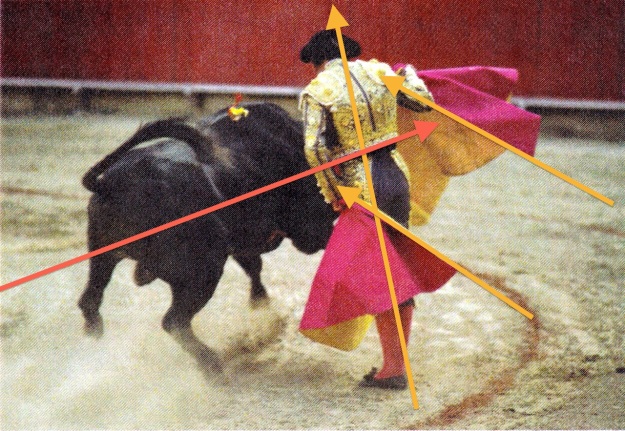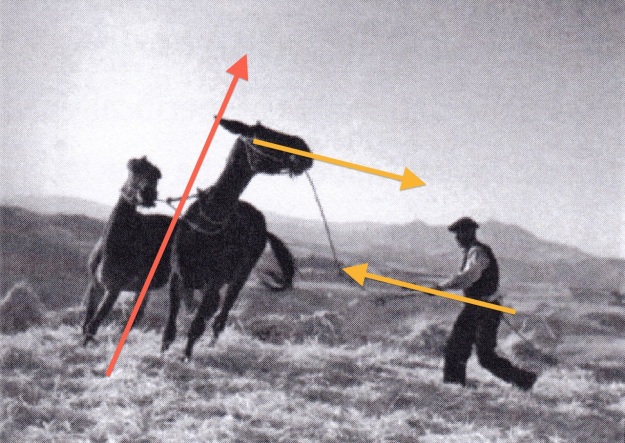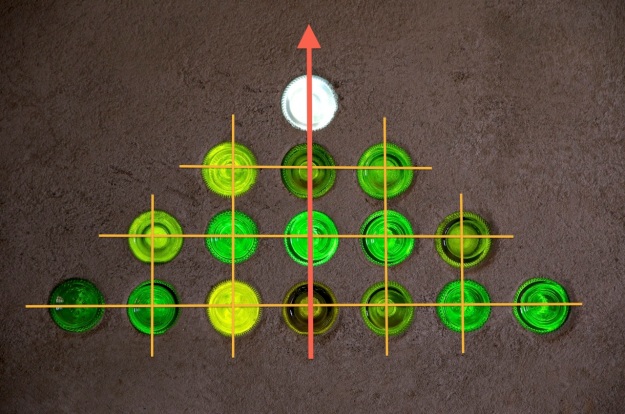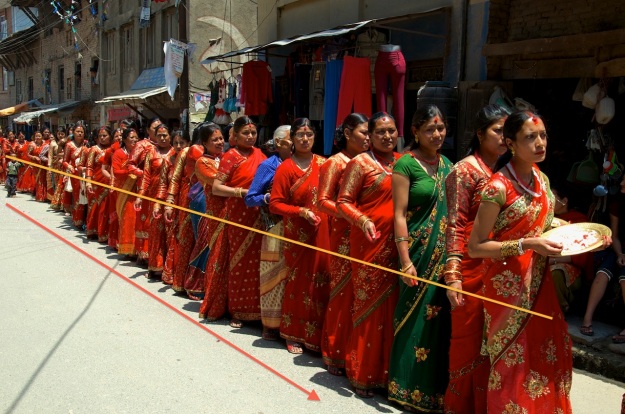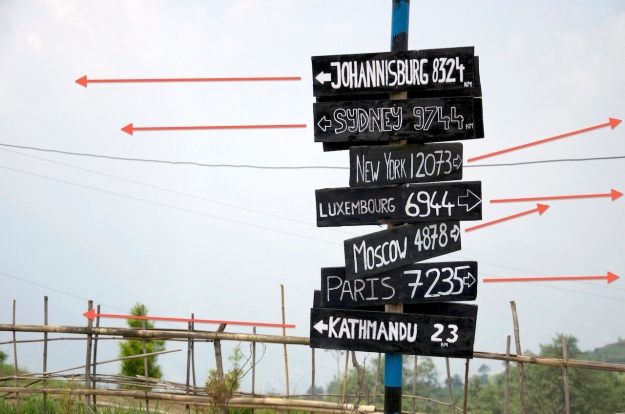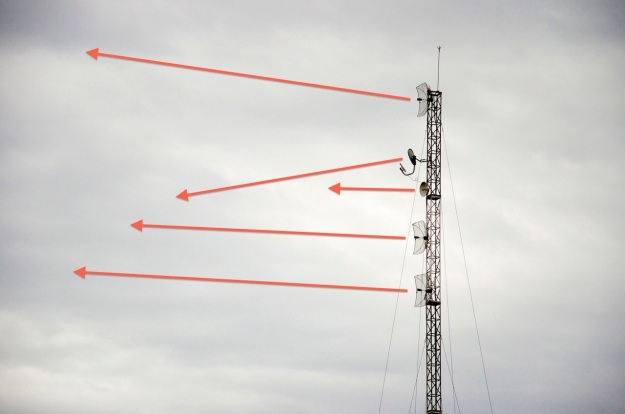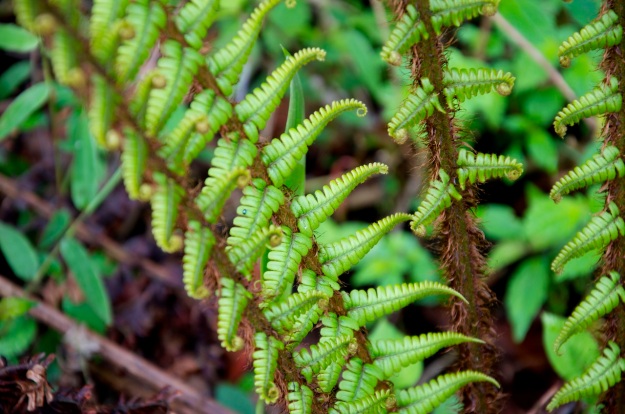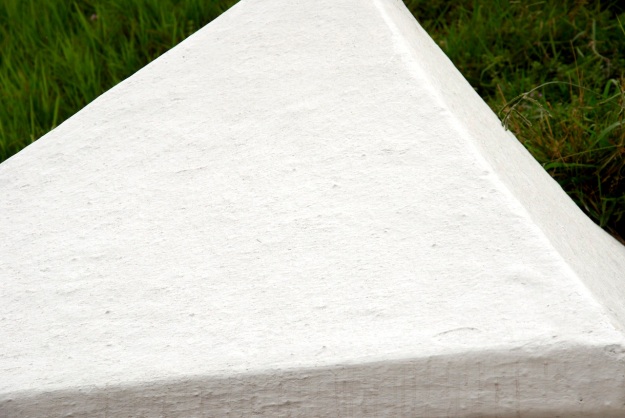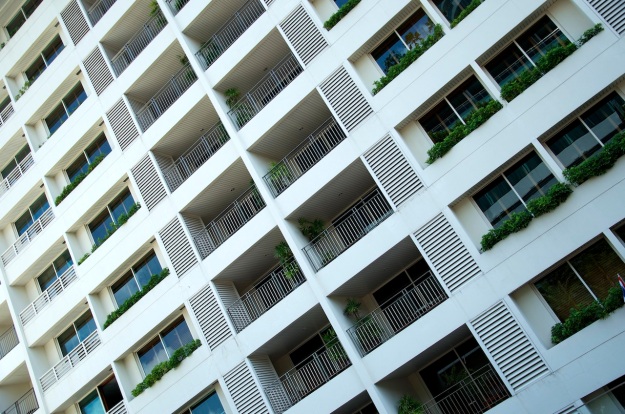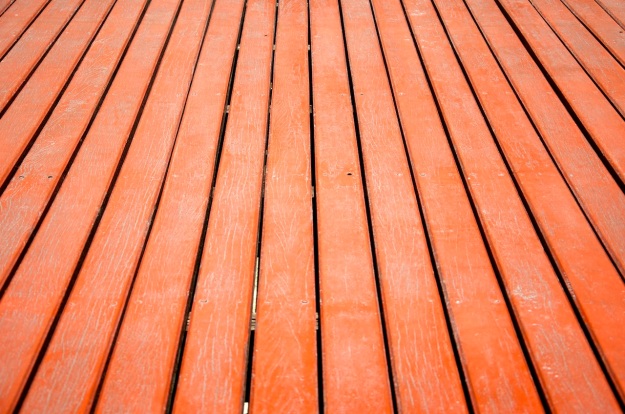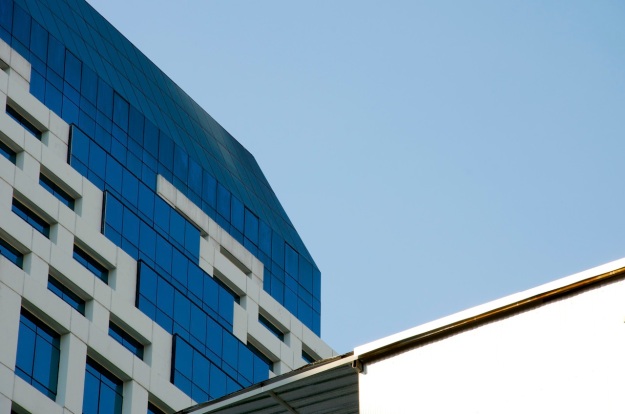Requirement:
This assignment should incorporate the insights learned so far into a series of 10-15 photographs on a chosen subject. The following effects should be shown:
- single point dominating the composition
- two points
- several points in a deliberate shape
- a combination of vertical and horizontal lines
- diagonals
- curves
- distinct, even if irregular, shapes
- a least two kinds of implied triangle
- rhythm
- pattern
The choice of subject groups are:
- flowers and plants
- landscapes
- street details
- the raw materials of food
- own chosen subject
My chosen subject – street details
1 – Single point dominating the composition:
The single point in this photo is quite obvious, the brown cow. It’s dark shape is the immediate draw in this image, and slight oddity of it – a cow standing in a river, only enhances that. I think had I zoomed in a little further, then the cow would have been the only point of interest in the image, without the distracting elements of the river bank, reflections or indeed another brown cow nearby. But as it is, the image only helps to better place the cow more assuredly in it’s environment.
2 – Two points:
The wider view actually had three chimneys visible, but the chimneys then somehow lost their obviousness, mostly due to their diminished size in the frame. So a zoom in and focus on the two nearest ones helped them to stand out and dominate the largely neutral fore and backgrounds, with their vertical orientation reinforcing the effect.
3 – Several points in a deliberate shape:
I thought I would try some night time photography at at time of year when candle lighting is a common activity in the local urban environment. I did not especially try to photograph this arrangement of candle points such that it would appear to form perfectly the shape of a circle or oval that I first had an impression of. That would have been too artificial. I only notice now that the arrangement of flowers form an even better circle shape, but are perhaps not as distinct as separate points.
4 – A combination of vertical and horizontal lines:
The regular measured spacing of the strips of wood arrayed and affixed perpendicular to each other in this wooden window grill are quite obvious, though the effect the apparent black squares have is to diminishes that quality somewhat. Still, even in an urban environment, arrangements of lines both vertical and horizontal within the same field of view are not easy to find.
5 – Diagonals:
The diagonals in this image are very sharp, reinforced by the material – sharp edged stone, even if the apparent lines they form are not true. The physical squares of stone themselves do not seem to lie in diagonal arrangements suggests by their edges, probably due to their mixed shades of colour.
6 – Curves:
The edges of these yak cheese rounds and their flat sides strongly demarcate a line between light and shadow quite strongly, throwing their curves into sharp relief. I like this image for the balance of light, muted colours and the simple arrangement of it’s elements.
7 – Distinct shapes:
For this image choice I was not sure how obvious a shape ought to be, whether it be formed in something of a shape in itself, or a shape formed by some arrangement of various disparate elements in the image. I think in the end I went for what was most obvious, or more interesting. In this image the effect of the bright metal oval (from this point of view) shape almost serves to stamp itself against the background with an interesting contrast.
8 – Two kinds of implied triangle:
The bamboo poles that form this swing, and the line of children standing below it lend themselves to the suggestion of a triangular shape quite effectively. I think the image is as stable I hope the swing appears to be.
9 – Implied triangle
The implied shape of this triangle is probably a stretch in more ways than one. I would say that there is not enough of a compositional balance in the image for it to readily suggest an implied triangle. While two sides are quite strong and definite, there is nothing really to suggest the third side, except perhaps the imagination.
10 – Rhythm:
The sense of rythmn in this image come form the very regular placement of the individual elements of each row of items, prayer wheels above and candle holders below. The eye naturally moves along these lines, testing the regularity of the spaced out objects. Ultimately though it is not something that holds the attention, as I feel that there is not much that is “interesting” about the image. A glance is almost enough to take in the scene, identify it’s components and arrangements, then move on.
11 – Pattern:
At first I thought that this scene, of Tihar festival lights lit at night, made an interesting pattern, due to the range of the colours of light, as well as their even arrangement. The sense of pattern though is diminished by not having zoomed in close enough to remove the empty black space at the top of the image. Still, as a pattern I think it’s still quite effective.
Learning Outcomes
For this assignment I was really quite challenged to find some of the elements required. This may partly be due to the sheer jumble of an urban environment a Kathmandu city is, and how clear lines of sight and the close proximity everything is from everything else is. But I also think that I tend to take requirements too literally, and usually try to find clear examples rather those that are enough of a suggestion. Opportunities are thus missed in this way as I tend to only take photos of what I think is most suitable, and discard or fail to consider the potential of all the possible situations that fit the requirement I may come across.
Quite often my photography is opportunistic, an approach that is more “let’s see what happens”, or “what I may find’, rather than a more focused or considered approach. A focused approach generally ends up being tedious if after some point I don’t see or find what I expect. This is a tendency I will need to overcome if I am to satisfy the demands that a specific project might require.
On the whole I enjoyed this assignment, despite the length of time it took me to complete it. That length of time I think allowed me to lose focus of the main aims and points of the assignment so in future I should need to aim to start and finish as if bound by a singular time-constraint, if that makes sense.

